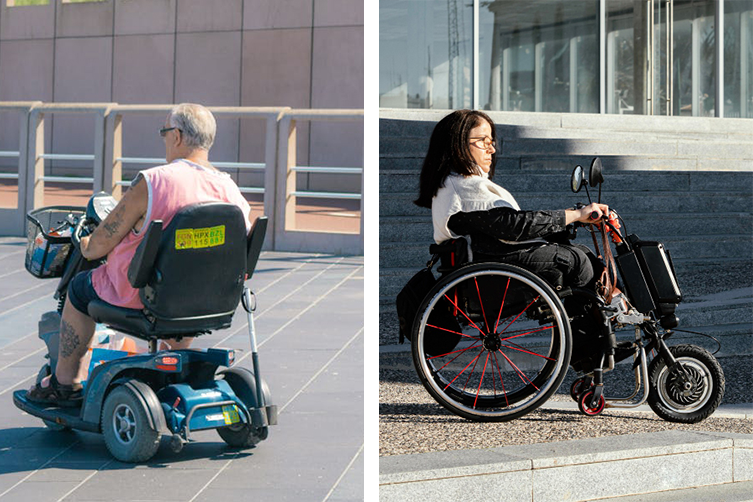Electric Wheelchair vs. Mobility Scooter
Learn the differences and get the device that best suits your need

Electric Wheelchair vs. Mobility Scooter
Learn the differences and get the device that best suits your need
April 12, 2024
By Thomas Brown
While both an electric wheelchair and a mobility scooter serve a similar purpose (assist people with limited mobilities), these vehicles boast different characteristics. The perfect mobility aid is the one that meets your needs. So, let’s get the hang of the main differences between mobility scooter vs electric wheelchair to pick the most suitable option.
Definitions
An electric wheelchair is a battery-powered and self-propelled chair. It is designed for both indoor and outdoor use. These electric devices are intended for individuals with limited mobility or enough strength in their upper body. Users can feel the freedom to navigate their environment while they do not have to waste their powers by propelling the wheels on their own.
In contrast, a mobility scooter is a powered, three- or four-wheeled device. It is primarily designed for outdoor use as most models are quite bulky and not foldable. Such a medical device is intended for individuals with limited mobility who are looking for an efficient mode of transportation. Unlike electric wheelchairs, mobility scooters usually feature a handlebar control system and are typically less customizable, with a one-size-fits-all design.
Comparing the main characteristics
Maneuverability: When it comes to better maneuverability, electric wheelchairs excel in indoor environments. Their compact size and precise control allow them to navigate tight spaces and home-related obstacles. A powered chair is perfect for using at home, office, or other indoor setting.
On the other hand, mobility scooters are better suited for outdoor use on paved surfaces. Their larger size and turning radius make them less agile in confined spaces, limiting their indoor maneuverability. A modern mobility scooter is designed to tackle smooth, flat terrain, such as sidewalks and park paths.
Comfort, ergonomics: Electric wheelchairs often feature adjustable seating, including options for back support, seat height, and even reclining. Users can maintain a comfortable posture during prolonged use, which is a great perk. The attention to detail in the ergonomic design of power wheelchairs contributes to enhanced comfort and reduced fatigue.
In comparison, mobility scooters often have a more one-size-fits-all approach to seating and ergonomics. While they may provide a level of comfort, the limited customization options may result in less than optimal support and fit for some users.
Power, battery life: There’s a powerful motor in modern electric wheelchairs that allow the device to navigate rough terrains – from smooth indoor floors to uneven outdoor bumps. Such medical chairs boast impressive battery life so you can be engaged in extended activities without the concern of running out of power. When the battery does require recharging, electric wheelchairs typically have faster charging times compared to mobility scooters.
Mobility scooters, on the other hand, are designed with sufficient power to handle outdoor use on paved surfaces, such as sidewalks and park paths. However, their battery life is generally shorter than that of electric wheelchairs. They require more frequent charging intervals.
Cost, accessibility: Electric wheelchairs tend to be pricier than mobility scooters. This higher price point ($2,000 – $5,000 on average) is often due to the advanced features, customization options, and specialized engineering required to ensure the top-notch performance of the device. However, an electric wheelchair may be covered by insurance or assistive technology programs. Such options make mobility aid more accessible for individuals with limited financial resources.
In contrast, mobility scooters generally offer a more affordable alternative for individuals with mobility challenges ($1,500 – $4,000 on average). They are often more widely available, making them a more accessible option for many users. However, mobility scooters are less likely to be covered by insurance or assistive technology programs.
Final thought
The choice between an electric wheelchair vs a mobility scooter depends on the individual’s unique needs. Electric wheelchairs excel in indoor maneuverability and battery life, while mobility scooters are better suited for outdoor use and offer a more affordable alternative. You should carefully evaluate your requirements and consult with healthcare professionals to decide which option is best for you.
(Lakeland, Florida-based Thomas Brown is a passionate writer at Marc’s Mobility who creates content and helps people choose a proper mobility aid.)
